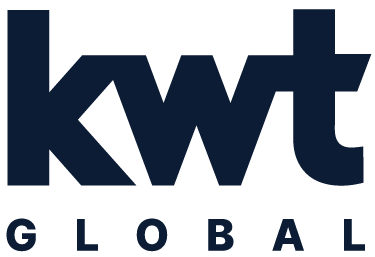Beyond the Buzz: Leveraging Influencers Outside of the Traditional Model
Insights from Jess Spar, SVP, Head of Social Media + Influencer Marketing
TL;DR: The influencer landscape is shifting, and brands need more strategic, collaborative partnerships to stand out. Moving beyond traditional endorsements, influencers can offer valuable insights in areas like product development, event coordination and brand strategy. As influencers increasingly launch their own brands, companies must view them as strategic partners—not just marketing tools—to stay competitive.
The influencer landscape has become increasingly cluttered. “Supply” is on the rise, with creators and influencers more prevalent than ever before: one in five social media users consider themselves to be content creators or influencers.
But demand is on the rise as well; audiences are consuming influencer content at an increasing rate—72% of Gen Z and Millennial consumers follow influencers on social media. This provides more opportunities for brands, but as they also spend more on influencer marketing, there’s a growing need to cut through the clutter. As the landscape continues to evolve, so too are the ways in which brands should leverage influencer partners.
From transactions to transformations
The influencer ecosystem is overdue for a paradigm shift. Traditional engagements typically stop at sponsored posts or endorsements, and while effective, these approaches barely scratch the surface of what influencers can bring to the table.
It's time for brands to pivot to more nuanced, strategically beneficial collaborations:
Consultant considerations: Influencers do more than influence; they understand market dynamics—often better than anyone. Their on-the-ground experience with building brands, creating content, engaging audiences, reacting to audience feedback and building communities uniquely positions them to consult brands on go-to-market or consumer engagement strategies, whether for a product launch or always-on. Consider partnering with influencers in a deeper capacity, leveraging them as advisors or consultants in key moments for the brand (or in a full-time partnership capacity).
Product development: Involving influencers in product development from the initial stages can lead to groundbreaking innovations. Their firsthand engagement with audience trends and reactions primes them to help ideate products that resonate on a broad scale.
Focus groups, reimagined: Who better to test a new concept than someone who has built a career understanding and predicting market trends? Utilizing influencers in “focus groups” can provide deep insights into the potential success of new initiatives before they hit the market.
Event amplification: Influencers have a strong connection with their audience, which often includes a peer network of other tastemakers. Partnering with influencers to “host” an event, including consulting on activities for the evening, inviting their network and delivering opening remarks can elevate a brand event.
Case studies in strategic influence
Remi Bader and Revolve: Fashion influencer Remi Bader collaborated with Revolve not just to endorse the products but also to help design them, ensuring the clothing line was body-positive and inclusive, aligning perfectly with her personal brand narrative and her audience's expectations.
Jack Harlow and KFC: Going beyond the traditional celebrity endorsement, rapper Jack Harlow's collaboration to create "The Jack Harlow Meal" included his favorite items, personalizing the brand experience and deepening consumer connection.
Gap and Julia Huynh: The partnership between Gap and TikTok creator Julia Huynh to design a new hoodie illustrated a creative way of tapping into creator collaborations to revitalize brand image and appeal to younger audiences.
Camille Kostek and Lovesac: To launch a new product innovation, KWT helped Lovesac turn to Camille Kostek, a brand fan of over a decade, to host their celebration event. She in turn promoted the event on social media, helped build an event list of NYC’s top influencers and spoke to media on-site about the brand’s new launch and her experience as a Lovesac owner.
Medfluencers and Healthcare: To enhance a healthcare client's recruitment efforts, KWT collaborated with Dr. Adam Goodcoff and Nurse Maddi Flanagan of Medfluencers to design a social media playbook and host a bootcamp for employee ambassadors. The initiative included a specialized workshop on content creation compliant with healthcare standards and the launch of a social media campaign portraying the organization's supportive and purpose-driven culture. Through this partnership, Medfluencers assisted the healthcare team in conceptualizing and creating content that celebrates their personal passions and professional environment.
The rise of influencer-founded brands
The emerging trend of influencers not just endorsing, but creating brands also underscores a pivotal shift.
Consider PRIME by Logan Paul and KSI, Summer Fridays by Lauren Ireland and Marianna Hewitt, Chamberlain Coffee by Emma Chamberlain and Djerf Avenue by Matilda Djerf as just a few of many examples. These ventures show the extensive capacity of influencers to understand and fulfill market gaps, and if brands aren’t capitalizing on their expertise, well... “You snooze, you lose.”
Influencers: partners or competitors?
The potential for strategic influencer collaboration is profound. As influencers forge their own brands, the incentive for traditional brands to engage them at a deeper, more creative level becomes not just beneficial but essential.
This evolution from mere endorsements to integral business strategy and product development partners can redefine competitive edges and propel brands into new heights of market relevance and innovation. So… if you’re not partnering with influencers, they may just end up your next competitor. Choose wisely.
To learn more about how we help brands navigate the evolving influencer landscape, click here to explore our services.
